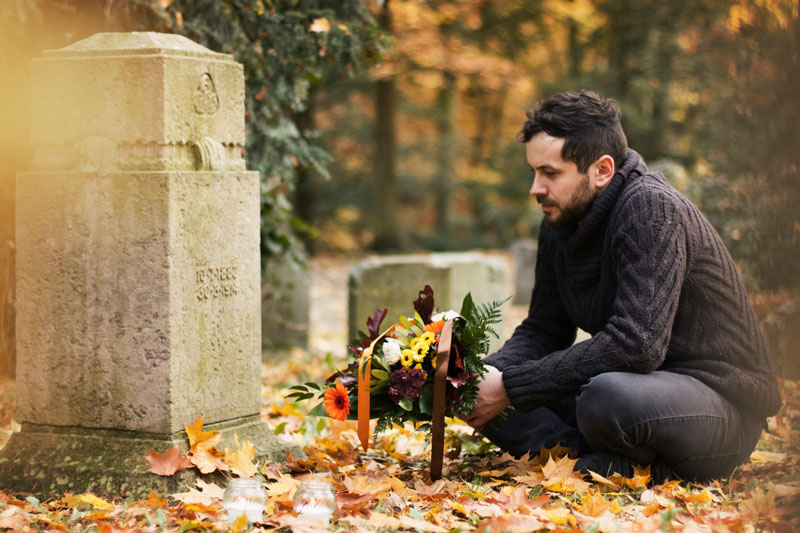Grief after the sudden, violent loss of a loved one is different. It’s not just about missing them—it’s about shock, injustice, unanswered questions, and the shattering of your sense of safety in the world. This is called traumatic grief, and it often doesn’t follow a predictable path.
Below are some common emotional phases many survivors experience after a traumatic loss. These phases aren’t linear, and you may move back and forth between them—or feel several all at once. Whatever you’re feeling, it’s valid.
Shock and Disbelief
These characteristics may be most intense in the first couple of months after the death but may accelerate at other critical times in your life. Intense panic, distress, and anger may be directed at others. Functioning is impeded, decision-making is difficult, and concentration is limited.
Immediately after the loss, many people feel completely disconnected from reality. You might feel like you’re in a fog or going through the motions. Even if you knew your loved one was in danger, nothing prepares you for the finality of the loss. You may experience:
- Emotional numbness or detachment
- Difficulty speaking or making decisions
- Sleep problems or nightmares
- Feeling like it’s not really happening
- Going “on autopilot” to handle logistics
This is your brain’s way of protecting you. Shock gives you space to survive the initial impact.
Yearning and Searching
These characteristics my be most intense four to six months following the death. You may feel like you are “going crazy” because your emotions are all over the place and you feel out of touch with reality. These are normal reactions to loss. After a traumatic loss, your mind may feel stuck in a loop, replaying the event and asking endless “what ifs.” This is your way of trying to make sense of the senseless. You might:
- Obsess over details of what happened
- Blame yourself or others
- Reconstruct the timeline over and over
- Search for meaning in the loss
- Feel spiritual confusion or anger at a higher power
There may never be satisfying answers—but your questions are valid, and seeking meaning is part of healing.
Extreme Sadness and Helplessness
As the numbness begins to wear off, intense emotions may take over. You may feel deep sorrow, overwhelming pain, or uncontrollable anger. You might rage at the perpetrator, at the system, or even at your loved one for leaving you behind.
Common experiences include:
- Feelings of helplessness, panic, or despair
- Anger at law enforcement, the courts, or bystanders
- Physical symptoms like chest pain or nausea
- Intrusive thoughts about what happened
- A desperate need to understand “why”
These emotions are a natural response to injustice and trauma—not a sign that you’re “failing” at grief. It’s normal to feel distressed emotions. For this reason, doctors and clinicians are cautioned against diagnosing patients with depression in the weeks following the loss, because these experiences make sense in the context of bereavement.
Guilt and Anger
Survivors often feel anger at what was done and guilt over what was not. These emotions run deep and they can only transcend them in time. Many survivors carry survivor’s guilt or believe they should have done something differently. These feelings can be especially intense after a violent death. You may think:
- “If only I had called them that day…”
- “Why them and not me?”
- “I should’ve seen the signs.”
- “I wasn’t there when they needed me.”
Guilt is common—but the responsibility lies with the person who caused the harm, not with you.
Disorientation and Dissociation
You may feel disorganized, depressed, guilty, and unable to accomplish normal tasks. Physical symptoms of stress appear and suicidal ideation is most apparent at this time. Your body is chemically changed. You may feel a detachment with self, or being a detached observer of oneself. You may feel you have changed and the world has become vague, less real, lacking in significance. Some people cope by emotionally shutting down, withdrawing from others, or avoiding reminders of the loss. This may look like strength on the outside, but inside, you may feel disconnected or lost. You might:
- Avoid places, people, or holidays
- Bury yourself in work or distractions
- Feel numb, cold, or “not like yourself”
- Experience memory lapses or time distortion
This is your brain’s attempt to protect you from overwhelm. You’ll reconnect when it feels safe to do so.
Reorganization
You may feel a sense of release from the loss of the loved one, a renewed energy that can be confirmed by observers, an ability to make judgments and handle complex problems, and a return to prior eating and sleeping habits.
With time, support, and space to grieve, many people find ways to slowly integrate the loss into their life. This doesn’t mean “moving on”—it means moving forward with the memory of your loved one, and carrying both the pain and the love with you. Signs of integration might include:
- Being able to speak about your loved one without breaking down
- Making meaning from the loss (advocacy, ritual, community)
- Finding new purpose or strength through healing
- A renewed sense of connection with life—even while grieving
You never “get over” a loss like this. But you can learn to live again, even while holding your grief.
